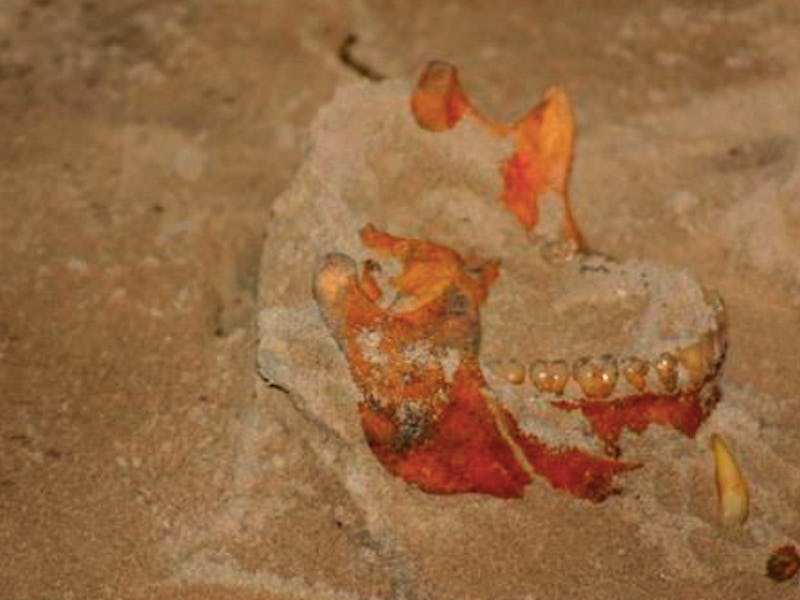Ancient DNA Reveals Descendants of a People Allegedly Decimated by Columbus
"It is truly liberating and uplifting."

When Christopher Columbus and his crew landed on the shores of San Salvador Island in 1492 they brought along slavery, war, and disease. But before these calamities began, the Europeans were greeted peacefully by the residents of what is now the Bahamas: The Taíno, considered the first indigenous Americans to feel the full impact of European colonialism, laid down their weapons and brought the foreigners presents. This coexistence did not last long — by 1548 the Taíno population, estimated to have been in the millions, had dropped to only 500 people.
Today, whether or not the Taíno live on is up for debate. Historians, archeologists, and people who claim Taíno heritage have argued for years that the people did not go “extinct,” yet it seems to be standard practice to teach that the Taíno were wiped out. Now, however, their legacy is exonerated: In a paper published Monday, researchers reveal they encountered the first genetic evidence that the Taíno still have living descendants today.
In the Proceedings of the National Academy of Sciences paper, scientists with international research project NEXUS1492 draw this conclusion by explaining what they found when they extracted the DNA of a 1,000-year-old tooth discovered in a site called Preacher’s Cave in the Bahamas. With this tooth, which belonged to a woman who lived 500 years before Columbus landed, they sequenced the first complete ancient human genome extracted from the Caribbean.
The entrance of Preacher's Cave where the tooth was found.
Once they had the ancient genome, the researchers compared it to the genomes of 104 living Puerto Ricans and to genomic data on people in 40 present-day indigenous groups from the Americas. They discovered that the Puerto Ricans were more closely related to the Taíno than any other American indigenous group and that 10 to 15 percent of people within the present-day indigenous groups were also closely related to the ancient Bahamian genome. This is proof that the Taíno, in many ways, still exist to this day, despite the fact that their population was nearly decimated upon the Europeans’ arrival.
The newly sequenced genome unearthed two more key discoveries. The first has to do with the Taíno timeline: While scientists had long believed that the Taíno didn’t make it to the Bahamas until 1,500 B.C. — the Caribbean was one of the last parts of the Americans to be populated by humans — the genome suggests that the ancestors of the Taíno originally lived in the Amazon and Orinoco basins, migrated to northern South America, then entered the Caribbean around 2,500 B.C., which is significantly earlier than the researchers expected. Secondly, the genome sequence showed no evidence of inbreeding despite the fact that the individual lived on an island, suggesting that her people had a large connection network over a wide chunk of geography.
Artist rendition of Columbus entering the "New World."
“Archeological evidence has always suggested that large numbers of people who settled the Caribbean originated in South America and that they maintained social networks that extended far beyond the local scale,” co-author and Leiden University archaeologist Corinne Hofman, Ph.D., explained in a statement released Monday. “Historically, it has been difficult to back up this with ancient DNA because of poor preservation, but this study demonstrates that it is possible to obtain ancient genomes from the Caribbean, and that opens up fascinating new possibilities for research.”
In the past decade, the ability to analyze ancient DNA has revolutionized archaeology. However, notes Hofman, poor DNA preservation holds back analysis in tropical areas like the Caribbean from reaching the same level of progress. Her team’s success in sequencing the Taíno woman’s genome, however, is a hopeful sign of change. The project itself is an exciting opportunity for researchers and holds plenty of promise for those hoping for a better understanding of their ancestry.
“I wish my grandmother were alive today so that I could confirm to her what she already knew,” Taíno descendant Jorge Estevez explained in a statement accompanying the study. Estev, who works at the National Museum of the American Indian, assisted the project team and was taught in school that his ancestors had gone extinct.
“It shows that the true history is one of assimilation, certainly, but not total extinction…Although this may have been a matter of scientific inquiry for them [the researchers], to us, the descendants, it is truly liberating and uplifting.”